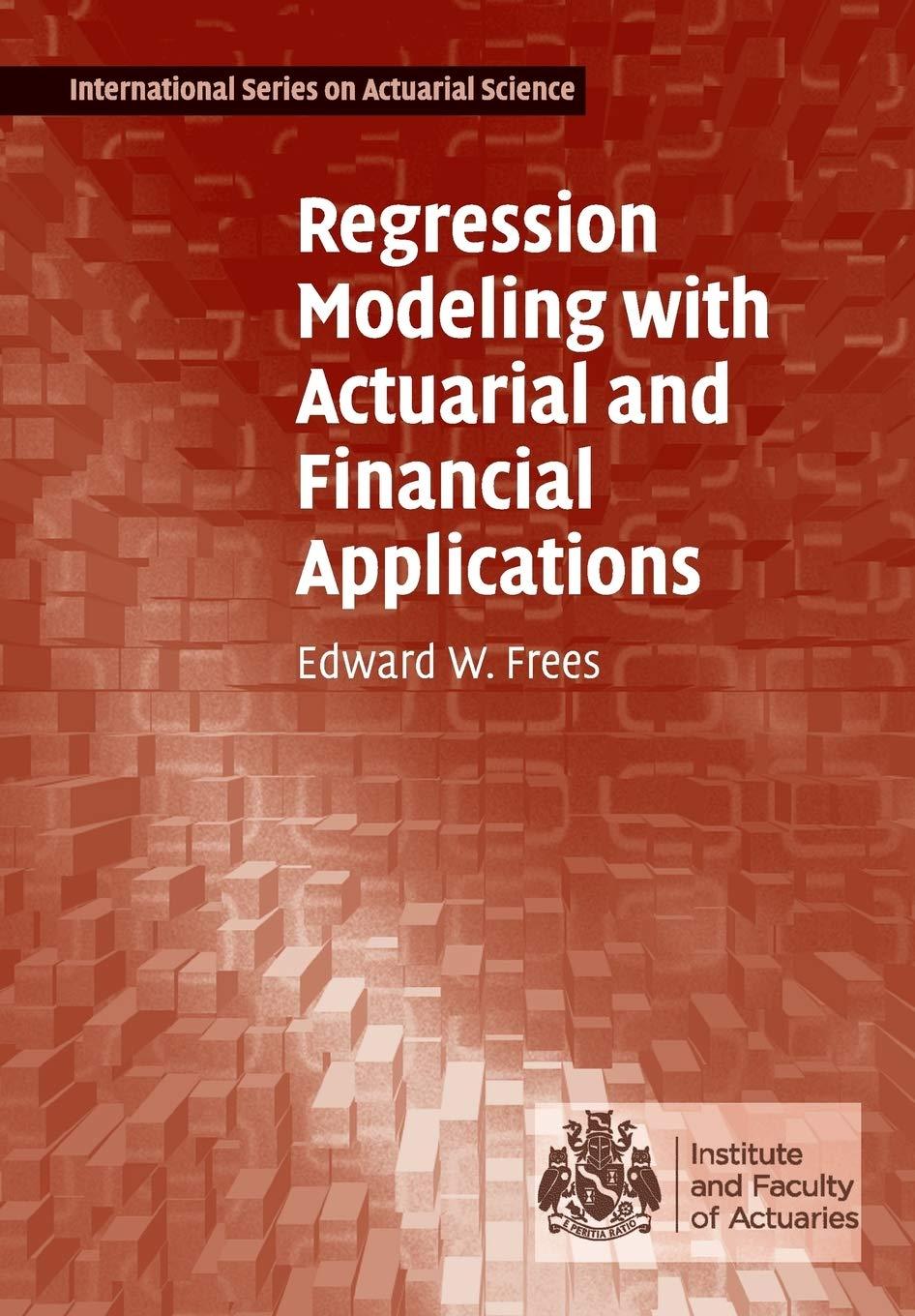This exercise considers nursing home data provided by the Wisconsin Department of Health and Family Services (DHFS)
Question:
This exercise considers nursing home data provided by the Wisconsin Department of Health and Family Services (DHFS) and described in Exercises 1.2 and 2.10. You decide to examine the relationship between total patient years (LOGTPY) and the number of beds (LOGNUMBED), both in logarithmic units, using cost-report year 2001 data.
a. Summary statistics. Create basic summary statistics for each variable. Summarize the relationship through a correlation statistic and a scatter plot.
b. Fit the basic linear model. Cite the basic summary statistics, include the coefficient of determination, the regression coefficient for LOGNUMBED, and the corresponding \(t\)-statistic.
c. Hypothesis testing. Test the following hypotheses at the 5 level of significance using a \(t\)-statistic. Also compute the corresponding \(p\)-value.
c(i). Test \(H_{0}: \beta_{1}=0\) versus \(H_{a}: \beta_{1} eq 0\).
c(ii). Test \(H_{0}: \beta_{1}=1\) versus \(H_{a}: \beta_{1} eq 1\).
c(iii). Test \(H_{0}: \beta_{1}=1\) versus \(H_{a}: \beta_{1}>1\).
c(iv). Test \(H_{0}: \beta_{1}=1\) versus \(H_{a}: \beta_{1}<1\).
d. You are interested in the effect that a marginal change in LOGNUMBED has on the expected value of LOGTPY.
d(i). Suppose that there is a marginal change in LOGNUMBED of 2. Provide a point estimate of the expected change in LOGTPY.
d(ii). Provide a \(95 \%\) confidence interval corresponding to the point estimate in part d(i).
d(iii). Provide a \(99 \%\) confidence interval corresponding to the point estimate in part d(i).
e. At a specified number of beds estimate \(x_{*}=100\), do these things:
e(i). Find the predicted value of LOGTPY.
e(ii). Obtain the standard error of the prediction.
e(iii). Obtain a 95\% prediction interval for your prediction.
e(iv). Convert the point prediction in part e(i) and the prediction interval obtained in part e(iii) into total person years (through exponentiation).
e(v). Obtain a prediction interval as in part e(iv), corresponding to a \(90 \%\) level (in lieu of 95\%).
Step by Step Answer:

Regression Modeling With Actuarial And Financial Applications
ISBN: 9780521135962
1st Edition
Authors: Edward W. Frees





